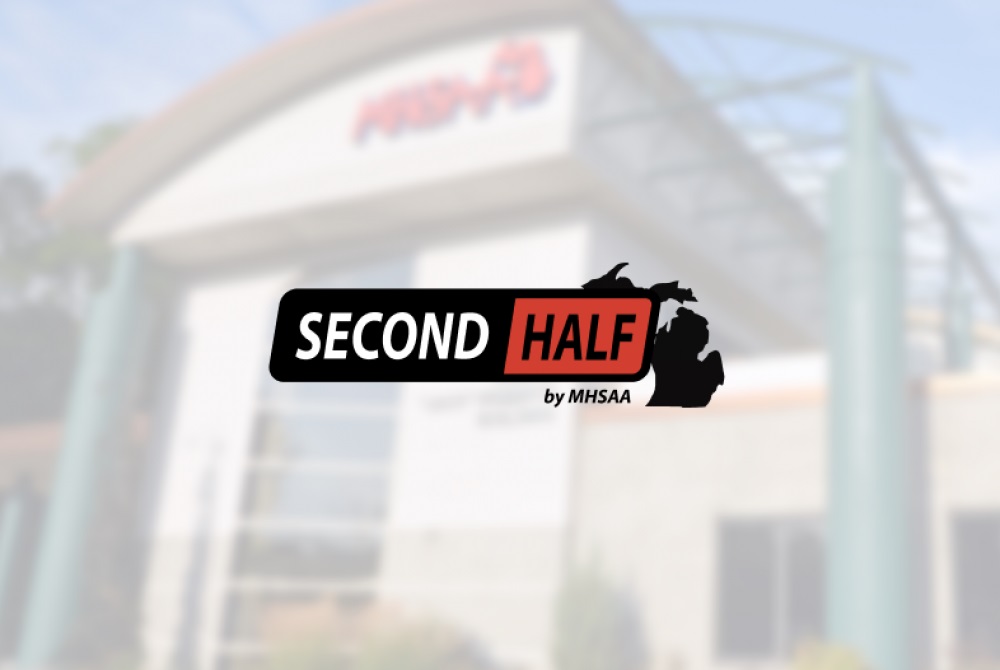
Study: Single-Sport Athletes Injured More
November 3, 2016
A study conducted by the University of Wisconsin School of Medicine and Public Health and funded by the National Federation of State High School Associations (NFHS) Foundation revealed that high school athletes who specialize in a single sport sustain lower-extremity injuries at significantly higher rates than athletes who do not specialize in one sport.
The study was conducted throughout the 2015-16 school year at 29 high schools in Wisconsin involving more than 1,500 student-athletes equally divided between male and female participants. The schools involved in the study represented a mixture of rural (14), suburban (12) and urban (3) areas, and enrollments were equally diverse with 10 small schools (less than 500 students), 10 medium schools (501-1,000 students) and nine large schools (more than 1,000 students).
Athletes who specialized in one sport were twice as likely to report previously sustaining a lower-extremity injury while participating in sports (46%) than athletes who did not specialize (24%). In addition, specialized athletes sustained 60 percent more new lower-extremity injuries during the study than athletes who did not specialize. Lower-extremity injuries were defined as any acute, gradual, recurrent or repetitive-use injury to the lower musculoskeletal system.
“While we have long believed that sport specialization by high school athletes leads to an increased risk of overuse injury, this study confirms those beliefs about the potential risks of sport specialization,” said Bob Gardner, NFHS executive director. “Coaches, parents and student-athletes need to be aware of the injury risks involved with an overemphasis in a single sport.”
Among those who reported previously sustaining a lower-extremity injury, the areas of the body injured most often were the ankle (43%) and knee (23%). The most common types of previous injuries were ligament sprains (51%) and muscle/tendon strains (20%).
New injuries during the year-long study occurred most often to the ankle (34%), knee (25%) and upper leg (13%), with the most common injuries being ligament sprains (41%), muscle/tendon strains (25%) and tendonitis (20%).
In addition, specialized athletes were twice as likely to sustain a gradual onset/repetitive-use injury than athletes who did not specialize, and those who specialized were more likely to sustain an injury even when controlling for gender, grade, previous injury status and sport.
Thirty-four (34) percent of the student-athletes involved in the Wisconsin study specialized in one sport, with females (41%) more likely to specialize than males (28%). Soccer had the highest level of specialization for both males (45%) and females (49%). After soccer, the rate of specialization for females was highest for softball (45%), volleyball (43%) and basketball (37%). The top specialization sports for males after soccer were basketball (37%), tennis (33%) and wrestling (29%).
The study, which was directed by Timothy McGuine, Ph.D., ATC, of the University of Wisconsin, also documented the effects of concurrent sport participation (participating in an interscholastic sport while simultaneously participating in an out-of-school club sport), which indicated further risk of athletes sustaining lower-extremity injuries.
Almost 50 percent of the student-athletes involved in the survey indicated they participated on a club team outside the school setting, and 15 percent of those individuals did so while simultaneously competing in a different sport within the school. Seventeen (17) percent of the student-athletes indicated that they took part in 60 or more primary sport competitions (school and club) in a single year. Among those student-athletes in this group who sustained new lower-extremity injuries during the year, 27 percent were athletes who specialized in one sport.
The student-athletes involved in the study were deemed “specialized” if they answered “yes” to at least four of the following six questions: 1) Do you train more than 75 percent of the time in your primary sport?; 2) Do you train to improve skill and miss time with friends as a result?; 3) Have you quit another sport to focus on one sport?; 4) Do you consider your primary sport more important than your other sports?; 5) Do you regularly travel out of state for your primary sport?; 6) Do you train more than eight months a year in your primary sport?
Although some sports (field hockey, lacrosse) are not offered in Wisconsin and were not included in the study, the study concluded that since specialization increased the risk of lower-extremity injuries in sports involved in the survey it would also likely increase the risk of injuries in sports that were not a part of the study.

MHSAA Member Schools Enjoy Significant Rebound in Sports Participation in 2021-22
By
Geoff Kimmerly
MHSAA.com senior editor
July 13, 2022
Participation in Michigan High School Athletic Association-sponsored sports rebounded tremendously during the 2021-22 school year, despite a slight decline in enrollment among the MHSAA’s 750 member high schools.
The onset of COVID-19 during the spring of 2020 was followed by a significant decline in participation in MHSAA sports during 2020-21. However, participation for the most recent school year concluding this spring saw an increase of 6.6 percent from 2020-21 to a total of 260,542 participants across the 28 sports for which the MHSAA sponsors postseason tournaments – even as statewide enrollment fell 0.76 percent to 440,728 students this past school year.
Girls participation increased 6.8 percent to 109,128 athletes, while boys participation was up 6.5 percent to 151,414. The overall MHSAA participation totals count students once for each sport in which they participate, meaning students who are multiple-sport athletes are counted more than once.
A total of 23 sports saw increases in participation during 2021-22 compared to 2020-21. Ten sports saw double-digit percentage increases, led boys track & field (27.2 percent to 22,120 participants), girls track & field (22.4 percent to 15,594 participants), and boys skiing (22.4 percent to 1,001 participants). Wrestling (17.1 percent) and boys bowling (16.2 percent) also saw double-digit increases, along with girls tennis (11.4 tennis), girls bowling (11.2 percent), girls competitive cheer (10.6 percent), boys golf (10.5 percent) and girls lacrosse (10 percent). Wrestling’s major boost came in part because of a nearly 300-percent increase in girls participants with 620 taking the mat for the first season of the MHSAA offering a girls championship division at its Individual Wrestling Finals.
Also enjoying increases in participation during 2021-22 from the previous year were girls golf (8.1 percent), girls skiing (7.6 percent), boys basketball (6.4 percent), girls soccer (6.3 percent), boys swimming & diving (6.1 percent), boys lacrosse (5.8 percent), softball (3.6 percent), girls basketball (3.1 percent), baseball (3.0 percent), boys tennis (2.8 percent), football (2.4 percent), girls volleyball (2.0 percent) and girls swimming & diving (1.2 percent).
Five sports saw decreased participation in 2021-22. The decline in boys soccer participation can be considered negligible, at only 0.21 percent with 28 fewer participants. Girls cross country (1.4 percent) and boys ice hockey participation (1.2 percent) decreases also were slight, with boys cross country next with a 3.9-percent decrease and girls gymnastics at 4.6 percent fewer participants than the previous school year.
Football, with a combined 33,284 participants over the 11 and 8-player formats, remained the most-played sport during the 2021-22 school year. Boys track & field (22,120) and boys basketball (20,017) were next for total participants followed by girls volleyball (18,798) – the most popular girls sport – baseball (16,528) and girls track & field (15,594).
While the majority of sports are still building back to their pre-COVID participation totals, golf and skiing posted some of their highest totals in some time. Boys golf (6,829) had its most participants since 2012-13, and girls golf (3,875) its highest total since 2003-04. The boys skiing total (1,001) was its highest since 2002-03, and the girls skiing total this past season (837) was the highest for that sport since 1998-99.
The participation figures are gathered annually from MHSAA member schools to submit to the National Federation of State High School Associations for compiling of its national participation survey. Results of Michigan surveys from the 2000-01 school year to present may be viewed on the MHSAA Website.
The following chart shows participation figures for the 2021-22 school year from MHSAA member schools for sports in which the Association sponsors a postseason tournament:
|
BOYS |
GIRLS |
|||
|
Sport |
Schools (A) |
Participants |
Schools (A) |
Participants (B) |
|
Baseball |
657/12 |
16,505 |
- |
-/23 |
|
Basketball |
730/4 |
20,006 |
721 |
13,596/11 |
|
Bowling |
422/14 |
4,059 |
415 |
2,684/26 |
|
Competitive Cheer |
- |
- |
360 |
5,741 |
|
Cross Country |
669/1 |
8,057 |
668 |
7,150/1 |
|
Football - 11 player |
531/105 |
30,955 |
- |
-/129 |
|
8-player |
118/16 |
2,181 |
- |
-/19 |
|
Golf |
528/62 |
6,705 |
367 |
3,875/124 |
|
Gymnastics |
- |
- |
102 |
585 |
|
Ice Hockey |
313/14 |
3,160 |
- |
-/14 |
|
Lacrosse |
179/9 |
4,759 |
126 |
3,053/14 |
|
Skiing |
125/5 |
993 |
119 |
837/8 |
|
Soccer |
500/12 |
13,126 |
490 |
11,826/35 |
|
Softball |
- |
- |
648 |
11,800 |
|
Swimming & Diving |
274/20 |
4,311 |
281 |
5,174/48 |
|
Tennis |
308/18 |
6,040 |
340 |
7,936/27 |
|
Track & Field |
694 |
22,120 |
695 |
15,594 |
|
Volleyball |
- |
- |
722 |
18,798 |
|
Wrestling |
492/249 |
8,437 |
/620 |
(A) The first number is the number of schools reporting sponsorship on the Sports Participation Survey, including primary and secondary schools in cooperative programs as of May 15, 2022. The second number indicates the number of schools that had girls playing on teams consisting primarily of boys.
(B) The second number indicates the number of additional girls playing on teams consisting primarily of boys and entered in boys competition.
The MHSAA is a private, not-for-profit corporation of voluntary membership by more than 1,400 public and private senior high schools and junior high/middle schools which exists to develop common rules for athletic eligibility and competition. No government funds or tax dollars support the MHSAA, which was the first such association nationally to not accept membership dues or tournament entry fees from schools. Member schools which enforce these rules are permitted to participate in MHSAA tournaments, which attract more than 1.4 million spectators each year.

